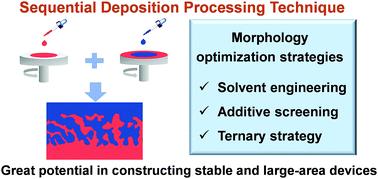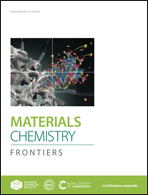Sequential deposition enables high-performance nonfullerene organic solar cells
Abstract
Bulk-heterojunction active layers prepared by a blend casting (BC) method have been predominantly used for more than two decades in the construction of organic/polymer solar cells (OSCs) with high efficiencies and stability. Sequential deposition (SD) with donor and acceptor layers coated sequentially is a facile but effective strategy to fabricate efficient OSCs and holds great promise to address the drawbacks of bulk-heterojunctions. Compared with OSCs prepared by the BC method, SD processed OSCs can separately engineer different layers, realizing an ideal profile of vertical component distribution, which is favorable for charge generation, transport and collection. SD processed OSCs based on nonfullerene acceptors have progressed rapidly, with a striking power conversion efficiency (PCE) up to >18% achieved recently. In this review, we summarize recent advances in the optimization of SD processed OSCs with particular emphasis on the role of processing solvents and co-solvents, solvent additives and the third components. Moreover, we comprehensively discuss the impact of the SD method on device stability and provide an overview of the potential of the SD method in constructing large-area solar cell panels. Finally, we outline the existing challenges and prospects of the SD method in industrial production. We hope that this review can provide some inspiration for the performance improvement of SD processed OSCs and advance their commercial applications.

- This article is part of the themed collection: 2021 Materials Chemistry Frontiers Review-type Articles


 Please wait while we load your content...
Please wait while we load your content...